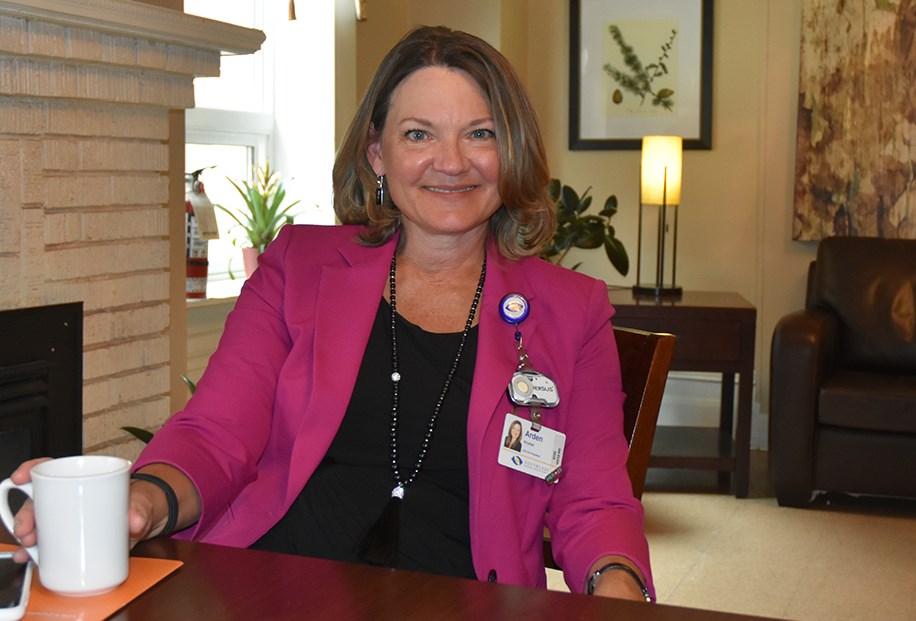The first budget tabled by the Doug Ford government included cuts to most ministry budgets — except for much of health care.
Overall health care spending is slated to rise by 1.6 per cent, and spending on hospitals by 2.05 per cent. The projected increases are accompanied by sweeping changes to the health care system, including the creation of a super-agency, Health Ontario, and more funding for home and community care.
And that could be a good thing, said president and CEO of Southlake Regional Health Centre Arden Krystal.
“Changing any structure always creates some fear and worries,” Krystal acknowledged, but she pointed out that Ontario hospitals have become “the place where people come when there’s nowhere else for them.”
At the moment, “there just aren’t enough places to keep people safe,” she noted, citing a shortage of long-term-care beds, transitional housing and community supports.
The budget proposes the establishment of Ontario Health teams — interdisciplinary teams of health and service providers that will work together to meet patients’ needs in the community — and it promises $384 million to “maintain critical hospital capacity, increasing access to highly specialized and innovative treatment and support volume growth,” and $267 million for home and community care.
“This kind of change in the system is long overdue,” said Krystal. “I don’t think the system we had was working. It wasn’t working for patients” and despite “great people” at every level of the health care system, it wasn’t sustainable, she said.
“Right now, there are a lot of barriers to integration (of health care services), and we need to break those down,” Krystal said.
Southlake is already working closely with its community partners and municipal governments to provide in-home and transitional services.
A new program, Southlake@home, focuses on the transition from acute care in hospital, to the home setting. Through partnerships, she said, “We can get people home faster that have more complex needs.”
The provincial changes make it even more important to look for local opportunities, and consider care from “a practical point of view,” said Krystal, providing services close to home for residents.
“How do we support them? How do we create more direct relationships?” The answer is more coordination in the community, she said. “This is like, ‘It takes a village.'"
Southlake is still reviewing the provincial policy changes, but intends to submit a proposal for an Ontario Health team.
“The government has issued a number of guidance documents for us to look at developing an Ontario Health team for our geographic area,” said Krystal.
“We think it is the best thing we can do to end ‘hallway medicine,’” meaning hospital beds filled by patients who no longer need acute care but have no alternative for care, and hallways filled with new patients waiting for beds.
While Ontario Health is a large, over-arching organization, the Ontario Health teams are “small enough to allow you to have local input and meet local needs,” Krystal explained.
The hospital is awaiting details of its funding allocations for everything from quality-based procedures, to the Health Based Allocation Model, and there are concerns.
Southlake’s catchment is one of the fastest-growing areas in the province, and it also has one of the most rapidly aging populations — the fourth fastest-aging population in Ontario.
“That double-whammy is really going to hit,” Krystal said. “I hope any allocation will recognize that growth.”
There are also labour shortages.
“There’s a shortage of many health professionals in the community,” she noted. “There’s a shortage of PSWs (personal support workers).”
That has been, in part, the result of a hiring model that required companies to bid to provide services and encouraged salary cuts. With more emphasis on partnership, a more unified governance structure and co-operation, there may be opportunities to stabilize salaries and attract the needed health care workers, Krystal suggested.
“We don’t know how it’s all going to happen, but the future has fewer barriers to how we become creative and innovative,” she concluded. “It’s a really different opportunity to think bigger, about how we deal with issues.”
Will a 2.05 per cent increase in funding — just about equal the rate of inflation — be enough?
“Financially, it may be a bit of a tight squeeze here, but we have to wait for the details,” said Krystal. “You always approach these things reasonably cautiously. We’re hopeful.”
Krystal was at the LOFT’s Bradford House, which provides transitional housing for seniors at risk of homelessness due to complex needs and challenges, when she was asked about the budget.
Southlake’s view: “We’re unequivocally supportive of the changes the health sector is making.”
